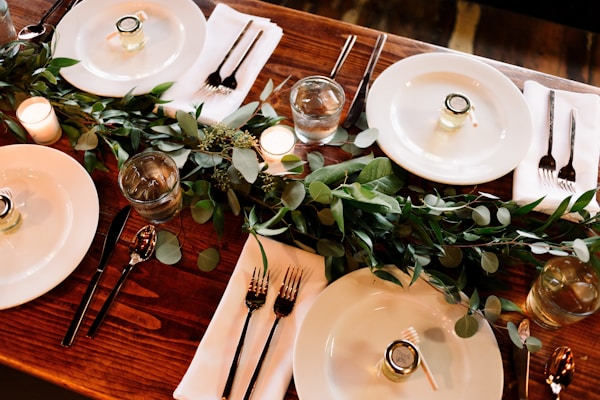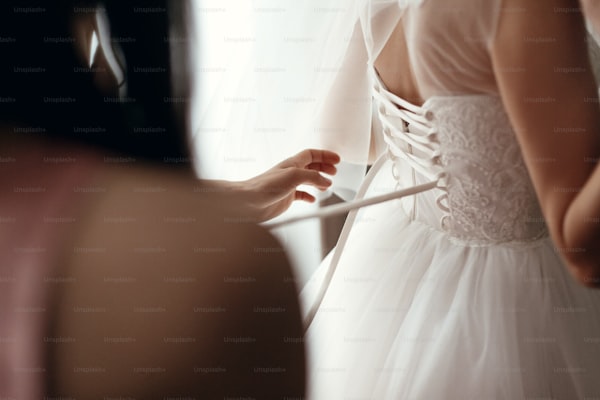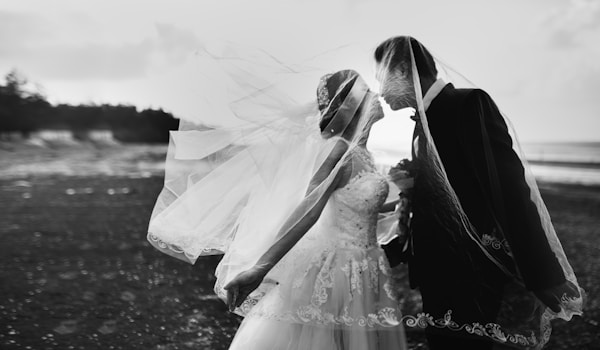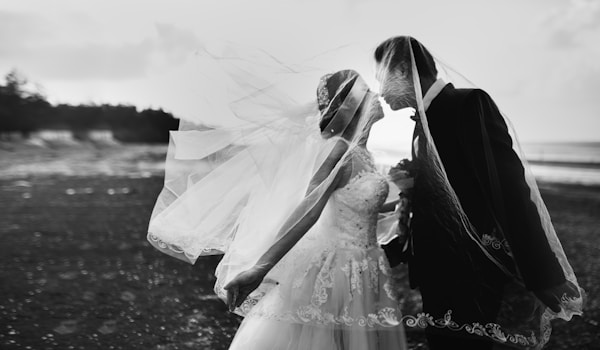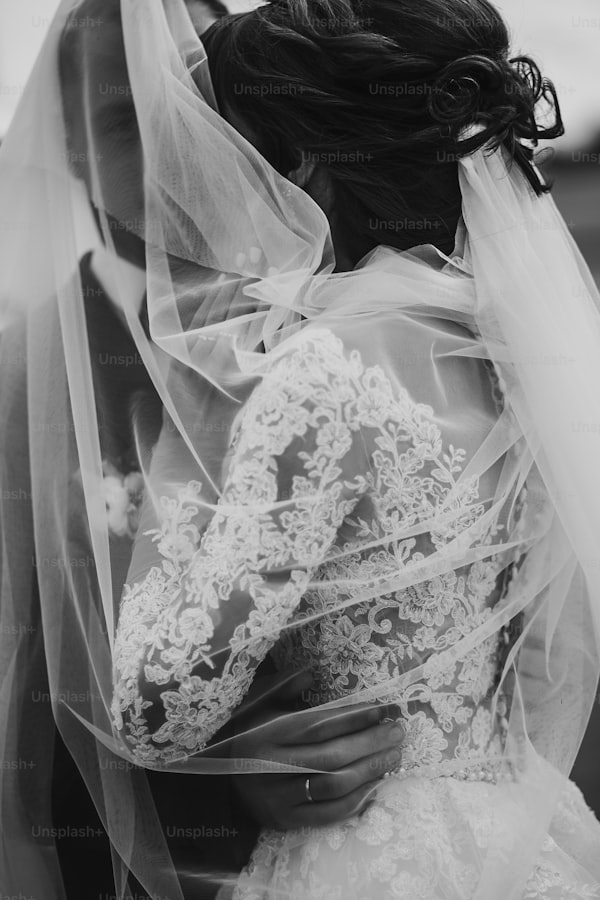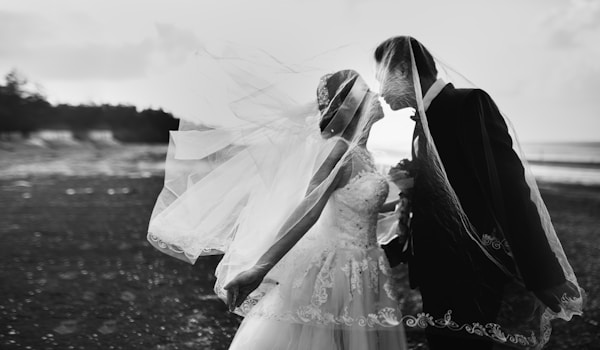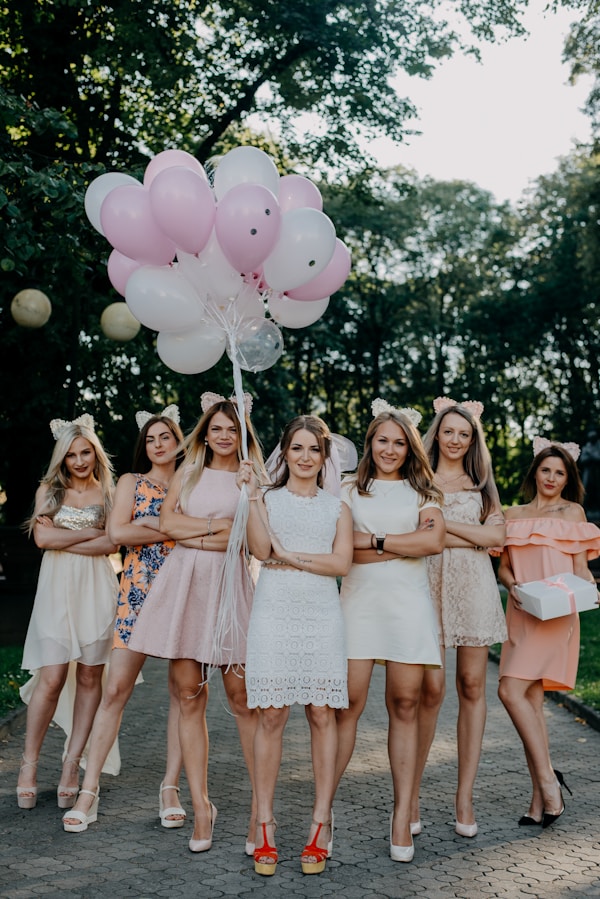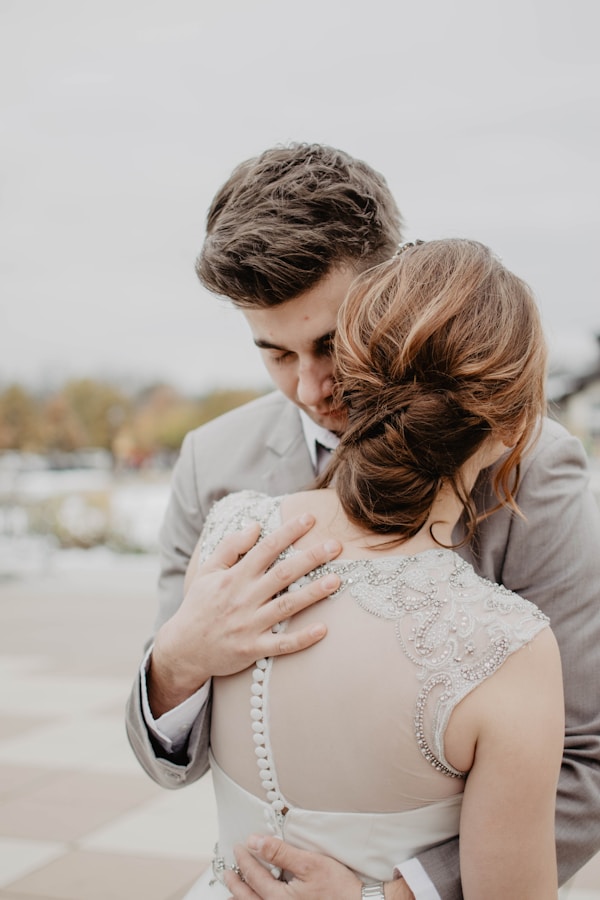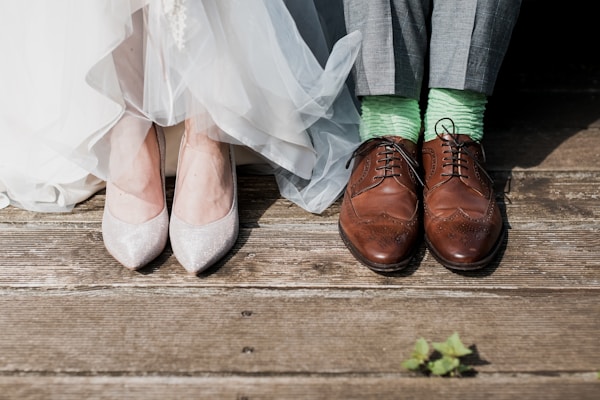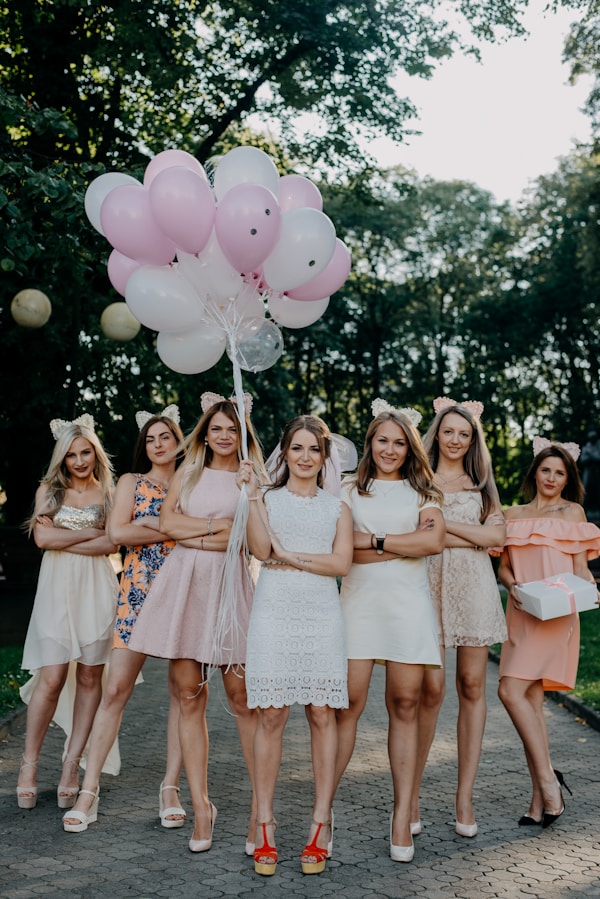Exploring Innovative Techniques in Creating a Wedding Dress with a Convertible Neckline
Wedding dresses have continuously evolved, embracing creativity and personalization. One of the most stunning trends in bridal fashion today is the convertible neckline. This design not only offers versatility but also allows brides to showcase their unique styles. In this article, we will delve into the various methods used to create a wedding dress with a convertible neckline, exploring the techniques, materials, and inspirations behind these beautiful gowns. The Allure of Convertible Necklines A convertible neckline provides an exciting opportunity for brides to transform their look from ceremony to reception. Imagine walking down the aisle in a stunning off-the-shoulder gown and then dancing the night away with a strapless look. This versatility is achieved through innovative design techniques that we will explore in detail. Methods Used to Create Convertible Necklines 1. Design and Draping Techniques One of the primary methods of creating a convertible neckline is through careful design and draping techniques. This process involves manipulating the fabric to create different neckline options while maintaining the integrity of the overall silhouette. Designers often begin with a muslin prototype to visualize how the fabric will lay and flow, allowing adjustments before committing to the final material. Common styles include: Type of NecklineDescription Off-the-ShoulderFeaturing delicate straps, allowing for a romantic look. StraplessCreates a sleek, modern fee...
How to Ensure a Wedding Dress Retains Its Shape After Repeated Wear
The Importance of Maintaining Your Wedding DressYour wedding dress is one of the most significant garments you will ever wear. It symbolizes love, commitment, and a moment in time that you will cherish forever. However, what happens to that exquisite piece of fabric after the big day? If you’re wondering how do you ensure a wedding dress retains its shape after repeated wear, you’re not alone. Many brides and wedding planners have the same question. This article will explore various methods to maintain the shape and quality of your wedding dress for years to come, ensuring that it remains a precious keepsake.Why Is Dress Shape Important?The shape of your wedding dress is essential, not just for aesthetics but for the overall impression it leaves on your special day. If a dress loses its form, it can look unflattering and take away from the joy of the occasion. Therefore, maintaining the dress’s shape after repeated wear is critical. Here are some factors to consider: Aesthetic Integrity: A well-maintained dress looks beautiful in photos and during future wear. Sentimental Value: Your wedding dress holds emotions. Maintaining its shape helps preserve those memories. Resale and Reuse: If you plan to sell or pass down your dress, maintaining its shape increases its value.Factors Affecting the Shape of Your Wedding DressUnderstanding what can impact the shape of your dress is vital. Here are some pertinent factors:FactorEffectFabric TypeSome fabrics, such as silk and chi...
How to Achieve a Tailored Fit for a Wedding Dress with a Fishtail Silhouette
Understanding the Fishtail SilhouetteThe fishtail silhouette, often referred to as a mermaid style, is one of the most popular choices for brides seeking to showcase their figure elegantly. This stunning design typically hugs the body from the bust to the knee and then flares out at or below the knee, resembling the tail of a fish. However, achieving a tailored fit with this design requires precision and an understanding of both body shape and fabric. In this article, we will explore how to achieve a tailored fit for a wedding dress with a fishtail silhouette, answering common questions and providing valuable tips for brides-to-be.Why is a Tailored Fit Important?A tailored fit is essential for several reasons. First and foremost, it enhances the overall aesthetic of the dress. A fishtail silhouette is designed to accentuate curves, and any excess fabric can disrupt the flattering line it creates.Additionally, a well-tailored dress ensures comfort and ease of movement, which is crucial for a day filled with socializing, dancing, and moments that involve moving around. Finally, proper fit adds to the confidence of the bride on her big day. When you feel good in what you are wearing, it shows.Measuring for a Fishtail Silhouette DressTo achieve a tailored fit, the first step is to take accurate measurements. Here are some key measurements you should consider:MeasurementDescriptionBustMeasure around the fullest part of your bust, ensuring the tape is level.WaistFind your natural w...
Techniques for Creating Pleats on a Wedding Dress Skirt: A Comprehensive Guide
Introduction to Wedding Dress Skirts and PleatsPleats are more than just elegant details on a wedding dress skirt; they add dimension and texture, elevating the overall aesthetic. Understanding the techniques used to create pleats on a wedding dress skirt can help brides-in-waiting make informed choices for their big day. In this article, we'll explore the various techniques, styles, and tips related to pleating, ensuring you have all the information needed to select the perfect wedding dress.Why Choose Pleats for Your Wedding Dress?Pleats offer a blend of tradition and modernity, making them a fantastic choice for a wedding dress. Here are a few reasons why pleated skirts stand out: Visual Interest: Pleats create patterns and movement, enhancing the beauty of the dress. Versatility: They can be adapted to various styles—be it A-line, ball gown, or sheath. Flattering Fit: Pleats can help disguise certain areas, offering more comfort and confidence to the wearer.Common Techniques for Creating PleatsSeveral techniques can be employed when crafting pleats for wedding dress skirts. Below, we delve into the most prominent methods: Technique Description Ideal For Knife Pleating All pleats face the same direction, creating a streamlined look. A-line and ball gown skirts. Box Pleating Pleats alternate directions, forming boxes, which add volume. Formal and vintage styles. Inverted Pleats Pleats are folded inward rather than outward, offering ...
Mastering Wedding Dress Repairs: Handling Delicate Fabrics Like Silk Chiffon
How to Handle Wedding Dress Repairs Involving Delicate FabricsWhen it comes to weddings, every detail matters, especially the wedding dress. One of the most common questions brides ask is, "How do you handle wedding dress repairs involving delicate fabrics like silk chiffon?" This guide will provide you with the essential tips and techniques to repair silk chiffon wedding dresses while ensuring that they maintain their beauty and elegance.Understanding Silk ChiffonSilk chiffon is a lightweight, sheer fabric known for its delicate and ethereal qualities, making it a popular choice for wedding dresses. However, its delicate nature also makes it susceptible to tears, frays, and other forms of damage. Therefore, knowing how to handle repairs properly is crucial to preserving the integrity of the dress.Common Repairs for Silk Chiffon Wedding DressesType of DamageRecommended Repair MethodTears or RipsHand-stitching with a fine needle and threadFraying EdgesUsing a fray check solution or a fine zigzag stitchLoose SeamsReinforcing with additional stitchingStainsSpot cleaning with appropriate fabric cleanerTools and Materials You’ll NeedBefore you embark on repairing your silk chiffon wedding dress, make sure you have the right tools and materials. Here’s a list to get you started:Fine needleQuality silk threadFray check solutionSmall scissorsFabric cleaner suitable for delicate fabricsIron set on low heat with a pressing clothStep-by-Step Guide for Repairing Silk Chiffon1. Assess the...
Unveiling the Secrets: What Methods Are Used to Create a Wedding Dress with Layered Lace Appliqués?
When it comes to wedding dresses, few features rival the elegance and romance of layered lace appliqués. This exquisite detail adds depth, texture, and a touch of luxury that many brides desire for their special day. But what methods are used to create a wedding dress with these intricate layered lace appliqués? In this article, we will delve into the various techniques used by designers and dressmakers, enhancing our understanding of this beautiful element of bridal fashion.The Art of Lace AppliquéLace appliqué is a fabric decoration technique that involves sewing a piece of lace onto a base fabric, creating a dynamic and stylish effect. The beauty of layered lace appliqués lies in their ability to create dimension and visual interest. Different methods can be employed to achieve this, each contributing to the overall aesthetic of the wedding dress.1. Choosing the Right LaceThe first step in creating a wedding dress with layered lace appliqués is selecting the appropriate lace. Various types of lace are available, including:Type of LaceCharacteristicsChantilly LaceDelicate and airy with intricate floral patternsAlençon LaceFeatures a floral pattern with a corded border, adding structureVenise LaceEmbroidered lace with motifs, ideal for three-dimensional appliquésCorded LaceHas raised designs which are great for creating depthChoosing the right lace sets the foundation for how the layered appliqués will look and feel on the dress. Designers often consider the wedding theme, t...
Designing the Perfect Wedding Dress for a Pregnant Bride: Key Considerations
When it comes to planning a wedding, the bridal dress is one of the most significant aspects that require attention, especially for a pregnant bride. The journey of motherhood can bring joy, but it can also present unique challenges when selecting the ideal wedding dress. In this article, we will explore the crucial considerations for designing a wedding dress for a pregnant bride, ensuring that she feels beautiful, comfortable, and confident on her special day. From fabric choices to silhouettes, we cover everything you need to know to create the perfect look. Understanding Body Changes During Pregnancy Pregnancy brings about numerous changes in a woman’s body, from weight gain to changes in body shape. These transformations can affect how a dress fits and feels. A bridal gown should accommodate a growing belly while providing ample support. Here are some key body changes to consider: Weight Gain: Most women gain between 25 to 35 pounds during pregnancy, but every woman's experience varies. Body Shape Shifts: Hormonal changes may result in wider hips and a fuller bust. Comfort Needs: Comfort becomes paramount as the due date approaches. Choosing the Right Silhouette The silhouette of the wedding dress is vital for pregnant brides. Here are a few flattering styles that work well: Silhouette Type Description A-Line Flows from the waist, offering comfort and room for the growing belly. Empire Waist Starts just under the bust, allowing for plenty o...
How to Create a Wedding Dress with a Perfect Princess Seam: A Comprehensive Guide
Understanding Princess SeamsCreating the perfect wedding dress is a dream for many brides. Among the most popular design elements is the princess seam, known for its flattering silhouette that hugs the body while allowing for graceful movement. In this guide, we will explore the intricacies of creating a wedding dress with a perfect princess seam, ensuring that your gown is both stunning and comfortable.What are Princess Seams?Princess seams are long, rounded seams that extend vertically down the length of a garment. Unlike darts, which create shape by pinching the fabric, princess seams provide a sleek and tailored fit. This design is ideal for wedding dresses because it enhances the bride's natural curves, creating an elegant and refined silhouette.Benefits of Princess Seams in Wedding Dresses Flattering Fit: Princess seams allow for a more customized fit, which is essential for a wedding dress that should feel like a second skin. Versatile Style: This design works well with various wedding dress styles, from A-line to mermaid to ball gowns. Enhanced Movement: The smooth flow of fabric provides comfort and freedom of movement, crucial for the day of your wedding.Materials Needed for Creating a Perfect Princess Seam Wedding Dress Material Purpose Fabric (silk, satin, or tulle) Main dress material Pattern paper To create your dress pattern Measuring tape For taking accurate body measurements Scissors For cutting fabric Sewing machine ...
Unlocking the Secrets: Techniques to Create a Fitted Wedding Dress with Stretch Lace
Understanding the Art of Creating Fitted Wedding Dresses with Stretch LaceWhen it comes to designing the perfect wedding dress, many brides dream of elegance, comfort, and style. Among the various fabrics available, stretch lace stands out as a unique choice that provides both comfort and a flattering fit. In this article, we will delve into the techniques that are used to create a fitted wedding dress with stretch lace, exploring everything from design principles to construction methods.The Allure of Stretch LaceStretch lace, characterized by its elasticity and delicate lace pattern, is a favored material for wedding dresses as it allows for a beautiful silhouette while ensuring ease of movement. Its unique properties make it an ideal choice for fitted designs, as it hugs the body beautifully and adds a touch of romance. Here are some of the techniques involved in creating stunning fitted wedding gowns with this exquisite fabric:1. Choosing the Right Type of Stretch LaceThe first step in creating a fitted wedding dress with stretch lace is selecting the right type of lace. There are various kinds available, each with unique textures and patterns:Type of LaceCharacteristicsScalloped LaceFeatures a decorative edge that enhances the hemline of the dress.Floral LaceOften used for romantic vibes, featuring a variety of floral patterns.Geometric LaceProvides a modern look with sharp patterns and sections.Choosing the appropriate lace type depends on the overall theme of the weddin...
How to Handle Alterations on a Wedding Dress with Multiple Fabric Layers
When it comes to planning a wedding, one of the most significant elements is the bridal gown. A wedding dress, especially one with multiple fabric layers, requires careful consideration and skilled alterations to ensure it fits perfectly. In this article, we will discuss how to handle alterations on a wedding dress with multiple fabric layers, covering essential tips and providing insight that will help brides make informed decisions about their special attire.The Complexity of AlterationsAltering a wedding dress involves much more than simply adjusting the length or waist. Many gowns contain multiple fabric layers, which can include tulle, lace, satin, silk, and chiffon. Each type of fabric has unique properties and requires different handling techniques. Additionally, some dresses feature intricate designs, embellishments, or structural elements, further complicating the alteration process.Why Professional Help MattersWhile some brides might consider making alterations themselves, it's crucial to recognize the value of professional assistance. Experienced seamstresses understand the nuances of various fabrics and possess the skills required to execute complex alterations. Here are some reasons why hiring a professional is essential: Expertise: Professionals know how to work with different fabrics and layers without causing damage. Precision: They ensure that every element of the dress is accurately measured and adjusted. Time-Saving: Hiring a professional saves bri...
Creating a Custom Wedding Dress: Methods for Design and Patterning
The Art of Custom Wedding Dress PatternsCreating a custom wedding dress is one of the most exciting parts of planning a wedding. For many brides, this is an opportunity to express their individuality and personal style on one of the most important days of their lives. One of the key components to designing a stunning custom wedding dress is developing the right pattern. This article will explore the methods used to create a custom wedding dress pattern for a bride, offering insights into fabric choices, design techniques, and the overall process. Whether you're a bride-to-be or simply interested in fashion design, this guide will provide valuable information.Understanding the Importance of a Custom Wedding Dress PatternA custom dress pattern is essential for achieving the perfect fit and style. Unlike off-the-rack dresses, custom patterns are tailored to the individual measurements and preferences of the bride, allowing for unique designs that reflect her personality. Here are some reasons why creating a custom wedding dress pattern is crucial: Personalization: Custom patterns allow for unique embellishments and details that might not be readily available in store-bought dresses. Perfect Fit: A well-made pattern ensures that the dress fits the bride perfectly, enhancing her confidence on her big day. Quality of Materials: Custom patterns allow the selection of high-quality fabrics, ensuring the dress not only looks stunning but feels wonderful as well.Methods for Cre...
Creating the Perfect Wedding Dress: Balancing Movement and Structure
Introduction to Wedding Dress DesignDesigning a wedding dress is both an art and a science, and one of the pivotal challenges faced by designers is achieving a balance between elegance and mobility. Many brides dream of a gown that not only looks stunning but also allows them to move freely on their special day. In this article, we will explore the essential elements of designing a wedding dress that is easy to move in while maintaining its structural integrity.Understanding Bridal Comfort and StructureA wedding dress is more than a piece of clothing; it's a symbol of love, commitment, and celebration. However, a bride should also be able to dance, walk, and enjoy her day without feeling restricted. The challenge lies in the design choices that need to harmonize movement with an aesthetically pleasing silhouette.Key Elements of DesignHere are some key elements to consider when designing a wedding dress that strikes the perfect balance:ElementDescriptionFabric ChoiceSelect lightweight and breathable fabrics like chiffon or silk that drape beautifully while allowing for movement.SilhouetteOpt for A-line or sheath silhouettes which provide a structured look while promoting ease of movement.Construction TechniquesIncorporate techniques like pleats and gathers which can offer both structure and flexibility in the dress design.Lining and SupportUse breathable lining that offers support without adding weight, making it easier to move.Choosing the Right FabricThe choice of fabric is ...
Creating a Stunning Ombre Effect Wedding Dress: A Comprehensive Guide
The Allure of Ombre Wedding DressesThe wedding dress is arguably one of the most significant elements of a wedding day. Among the various styles and techniques to choose from, the ombre effect has gained popularity for its unique and visually stunning appeal. This article will explore what are the steps for creating a wedding dress with an ombre effect, covering materials, design choices, and essential techniques.What is Ombre?Ombre is a French term meaning "to shade." In fashion, it describes a gradient effect where one color gradually transitions into another, creating a seamless blend. For wedding dresses, this technique adds depth and character, allowing brides to express their individuality. Why Choose an Ombre Effect for Your Wedding Dress? Personalization: An ombre wedding dress can reflect the bride's personality and preferences. Visual Impact: The gradient effect creates a striking visual, attracting compliments and admiration. Modern Twist: It offers a contemporary alternative to traditional solid-color bridal gowns.Steps for Creating an Ombre Wedding DressStep 1: Select the Right FabricThe fabric selection is crucial in achieving the ombre effect. Look for materials that will take dye well, such as silk, chiffon, or tulle. Consider the following: Silk: Luxurious and flowing, ideal for detailed work. Chiffon: Light and sheer, perfect for layering. Tulle: Creates volume, suitable for skirts.Step 2: Choose Your ColorsSelecting the right colors is a v...
How to Maintain the Softness of Tulle in a Wedding Dress After Multiple Fittings
The Importance of Tulle in Wedding DressesTulle is a lightweight, fine netting fabric that adds a delicate and romantic touch to wedding dresses. Its sheer quality and soft texture make it a popular choice for layering, veils, and embellishments in bridal gowns. However, one common concern among brides is how to maintain the plush softness of tulle throughout the wedding dress fittings.Understanding Tulle FabricBefore diving into maintenance tips, it is crucial to understand the unique characteristics of tulle fabric. Tulle is made from various fibers, including nylon, polyester, and silk. Each type of tulle possesses its distinct qualities:Type of TulleTextureDurabilityCommon UsesSilk TulleSoft and luxuriousLess durableBridal veils, overlaysNylon TulleStiff and structuredHighly durableSkirts, ball gownsPolyester TulleFlexible and medium weightModerately durableVarious bridal attireChallenges Faced with Tulle After Multiple FittingsFittings are essential for ensuring that your wedding dress fits perfectly on your special day. However, frequent handling can lead to several issues with tulle, including:Wrinkling: Tulle can easily become wrinkled from being packed or folded during fittings.Loss of Shape: Excessive handling might cause tulle to lose its intended shape, especially if it is not stored correctly.Rough Texture: Repeated pressure during fittings may result in a rougher texture, diminishing the softness of the fabric.Tips for Maintaining Softness of TulleTo help mainta...
Unlocking the Secrets: What Techniques Are Used to Create a Wedding Dress with an Open Back?
Understanding Open Back Wedding DressesWhen it comes to wedding fashion, few trends are as elegant and timeless as a wedding dress with an open back. These stunning gowns blend sophistication with a hint of allure, captivating brides and their guests alike. But what techniques are used to create these beautiful designs? In this comprehensive guide, we’ll delve into the various methods and considerations essential for crafting an exquisite open back wedding dress.The Allure of Open Back DesignsOpen back wedding dresses have gained immense popularity in recent years. They provide an opportunity for brides to express their unique style while maintaining a sense of elegance. Open back dresses can range from subtle cut-outs to dramatic plunges, making them versatile for different wedding themes and personal preferences.Key Techniques in Crafting Open Back Wedding DressesCreating a wedding dress with an open back involves various techniques that garment designers and seamstresses employ to ensure both aesthetics and functionality. Below are some of the key techniques used in the creation of these stunning gowns:TechniqueDescription1. Fabric SelectionThe choice of fabric is crucial for an open back design. Lightweight materials like chiffon, lace, or tulle offer the right amount of movement and elegance, while structured fabrics like satin or silk provide support and shape.2. Pattern DraftingDesigners start with a pattern that allows for strategic cut-outs. This pattern must align w...
The Ultimate Guide to Attaching Detachable Elements to Wedding Dresses: How to Perfectly Add a Cape
IntroductionWedding dresses come in all shapes and sizes, and many brides are looking for ways to add a unique touch to their special day. One popular option is incorporating detachable elements, such as a cape, into the design. This allows for versatility in the wedding outfit and a stunning transformation from ceremony to reception. In this article, we will explore the different methods used to attach detachable elements, with a focus on how to beautifully attach a cape to a wedding dress.Why Detachable Elements Are TrendingDetachable elements provide brides with the opportunity to customize their wedding dress, making it more than just a one-time wear. Capes, in particular, have surged in popularity for the following reasons: Versatility: A detachable cape can easily transform a traditional gown into a chic, modern look. Style Statement: It adds an element of drama and sophistication to the overall appearance. Layering: Capes allow brides to easily transition from a formal ceremony to a fun reception while maintaining their style.Methods for Attaching Detachable ElementsWhen it comes to attaching a detachable cape or other elements to a wedding dress, there are several methods that designers and brides can consider:1. Hook and Eye FastenersThis is one of the most common methods for attaching a detachable cape. Small hooks are sewn onto the dress, which correspond to tiny loops or eyes on the cape. The advantage of this method is that it is discreet and secure, ens...
How to Design a Wedding Dress That Suits Both Ceremony and Reception: A Comprehensive Guide
Designing a wedding dress requires a meticulous balance between aesthetics and functionality, especially when the dress needs to be suitable for both a ceremony and a reception. In this article, we will explore essential elements you'll want to consider, share tips from industry experts, and answer common questions about creating the perfect wedding dress. Let's dive in!Understanding the Essentials1. The Significance of VersatilityA versatile wedding dress is crucial for the modern bride. This type of dress allows for seamless transitions throughout the wedding day—from the solemnity of the ceremony to the joyful celebration of the reception. When you design a versatile dress, you ensure that every moment is comfortable and stylish.2. Fabric SelectionThe choice of fabric plays a pivotal role in how your wedding dress drapes, flows, and feels. Here are common fabric types to consider:Fabric TypeAdvantagesSilkLuxurious feel; drapes beautifullyLaceRomantic appearance; adds textureChiffonLightweight; ideal for movementTulleFullness; perfect for skirts and overlays3. Design Elements to ConsiderWhen designing your dress, think about the following elements:A. Neckline StylesDifferent necklines can change the formality and comfort of a dress. Options like sweetheart, off-the-shoulder, or high neck can elevate your look while ensuring ease of movement during dancing.B. Skirt LengthLong skirts can give a traditional feel during the ceremony, while shorter designs may allow for more cas...
Mastering the Draped Effect: Techniques for Wedding Dress Design
Introduction to Draped Effects in Wedding Dresses Wedding dresses are considered a symbol of elegance, romance, and style. Among the various styles, the draped effect has become increasingly popular. This technique adds a specific allure and sophistication to gowns, making brides feel like true queens on their special day. So, what techniques are used to create a draped effect on a wedding dress? In this article, we will explore various methods, discuss related styles, and answer common questions regarding draping in wedding dress design. The Art of Draping in Fashion Design Draping is a unique and skillful technique in the realm of fashion design that involves arranging fabric on a dress form to achieve a desired aesthetic. It is particularly effective in wedding dresses, where structural elegance is essential. Designers employ various methods to create draped effects—from simple manipulations of fabric to intricate stitching techniques. Common Draping Techniques Let's dive into some of the most popular techniques utilized to achieve the draped effect in wedding dresses: TechniqueDescriptionGatheringFabric is drawn together to create soft folds, which adds fullness and texture.Asymmetrical DrapingFabric is draped unevenly to create a dynamic, flowing silhouette that flatters the body.RuchingThis technique involves tightly gathering fabric along a seam, producing a textured, ruffled appearance.Twisted DrapingThe fabric is twisted and arranged in a way that creates a dramatic...
Handling Fitting Adjustments for a Wedding Dress with a Full Skirt: Your Comprehensive Guide
Your Dream Wedding Dress: A Perfect FitGetting married is one of the most significant events in a person's life, and choosing the perfect wedding dress is a crucial part of that experience. Among the various styles available, dresses with full skirts are particularly popular for creating a fairytale look. However, ensuring your dress fits perfectly requires careful handling of any necessary adjustments. In this article, we will guide you through the process of fitting adjustments for a wedding dress with a full skirt, addressing common concerns, and providing valuable insights.Understanding the Nature of Full SkirtsBefore diving into the adjustments, it’s important to understand why full skirts can present unique fitting challenges. Wedding dresses with full skirts often have layers of fabric, which can create volume and drama but also complicate the fitting process. Common issues include: Excessive Fabric Bunching Incorrect Waist Measurement Uneven Hem Lines Inflexibility in MovementEssential Steps for Fitting AdjustmentsHere’s a breakdown of the essential steps you should follow to ensure a proper fit for your wedding dress with a full skirt.1. Selecting the Right SeamstressChoosing an experienced seamstress knowledgeable in handling full skirts is the first and foremost step. Look for recommendations or reviews from brides in your area, and ensure your seamstress has a portfolio showcasing similar work.2. Initial Fitting AppointmentDuring your first fitting, we...
Essential Methods for Preventing Snags in Delicate Wedding Dress Fabrics
Understanding Wedding Dress Fabrics Choosing the perfect wedding dress fabric is crucial for any bride. However, one of the common issues brides face is snagging. Handling delicate fabrics requires knowledge of suitable methods to ensure the dress remains flawless on the big day. This article will discuss the various methods used to prevent snags when handling delicate wedding dress fabrics. Types of Delicate Wedding Dress Fabrics Before delving into prevention methods, it’s essential to understand the types of fabrics frequently used in wedding dresses. Each fabric type has its unique characteristics and vulnerability to snags. Some popular fabrics include: Fabric TypeCharacteristics SatinSmooth and glossy, but prone to snagging. LaceIntricate patterns that can catch on objects. ChiffonLightweight and flowing, but delicate and easy to snag. TulleSheer and structured, making it vulnerable to snags. Common Causes of Snags Understanding what leads to snags can help in prevention. Here are some common causes: Contact with rough surfaces, such as walls or furniture. Jewelry and accessories that may catch on the fabric. Improper storage methods that increase fabric stress. Wearing with other textured garments that may cause friction. Methods for Preventing Snags Now that we understand the types of fabrics and their vulnerabilities, let’s explore effective methods to prevent snags: 1. Choosing the Right Accessories Brides should opt for smooth, snag-free ...

